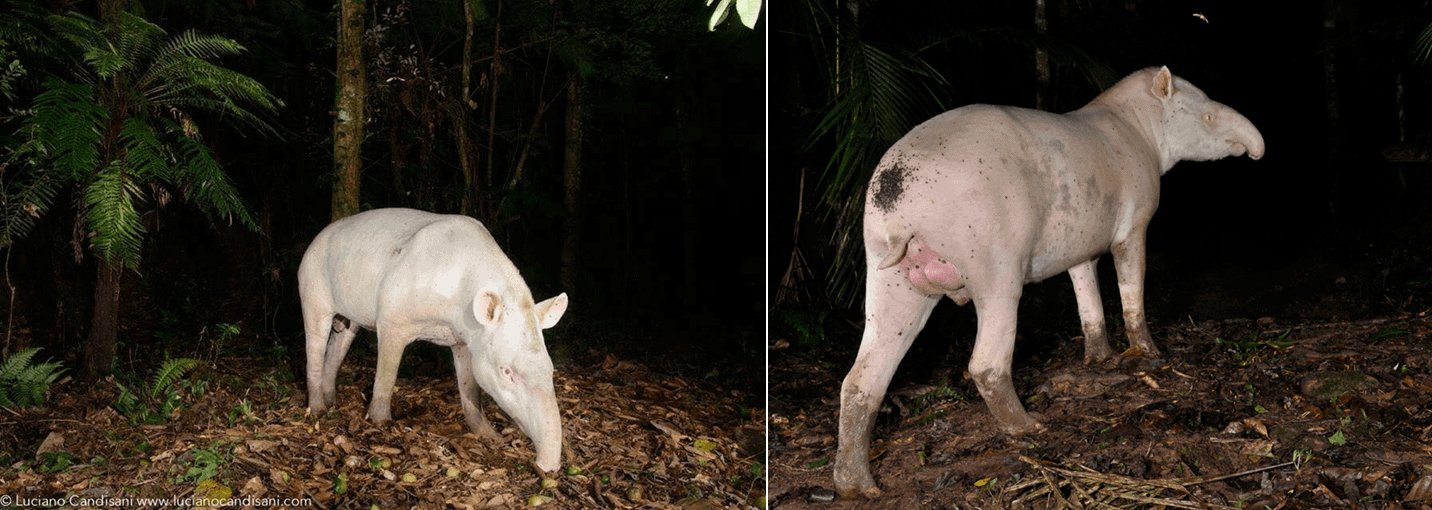Albino Lowland Tapirs discovered in the Brazilian Atlantic Forest
A rare sight: researchers from Brazil recently discovered two albino Lowland Tapirs in the Atlantic forest. Their discovery provides a unique opportunity to study the genetic diversity of an important and vulnerable species.
By Laila Rebecca, Mariana Landis & Luciano Candisani
Scientists find it hard to study large animals in tropical forests where animals are few and far between and tend to avoid people. Therefore, a group of researchers were excited when they discovered two albino Lowland tapirs – Brazil’s largest land mammal – in a private reserve in the state of São Paulo.
The discovery, recently described in Mammalia, was only possible through the collaboration of two conservation programs in the Legado das Águas Reserve: The Living Forest (Floresta Viva) Project by the photographer Luciano Candisani, and the Tapir Monitoring Project, led by Mariana Landis of the Manacá Institute.
Hidden cameras in the Atlantic forest
Candisani set up “camouflaged studios” in the forest to take photographs of the elusive fauna, by using high-resolution cameras and professional lighting with infrared sensors that were triggered when animals walked by within a specific range. Typical trail cameras only take black-and-white images at night. The Living Forest high-resolution color photos, however, turned out to be instrumental in identifying individual animals.
The research team combined 190 photos with 622 videos, which allowed the identification of two albino lowland tapir males – distinguishable by one of them having a cut ear. Both males were true albinos, characterized by completely white fur and pink or red eyes. Typical Lowland Tapirs are mostly dark brown, with a short, black mane, brown with salt-and-pepper cheeks and throat, and dark eyes.

True albinism in animals is rare, hereditary, and recessive, which means that both “normal” parents must have albino genes to produce albino offspring. According to the researchers, the two tapir males may be related, perhaps even brothers. They assume that the two animals might be the only free-living albino Lowland Tapirs anywhere.
Habitat loss is the greatest threat for the Lowland Tapir. It leads to smaller populations and loss of genetic diversity, which is important for the species to adapt to environmental changes. Still, with their discovery, the researchers see a silver lining. “Finding these two albinos makes an excellent opportunity to better understand the species’ genetic diversity in the dwindling Atlantic Forest”, they say.
If you are interested, learn more in the original article here: